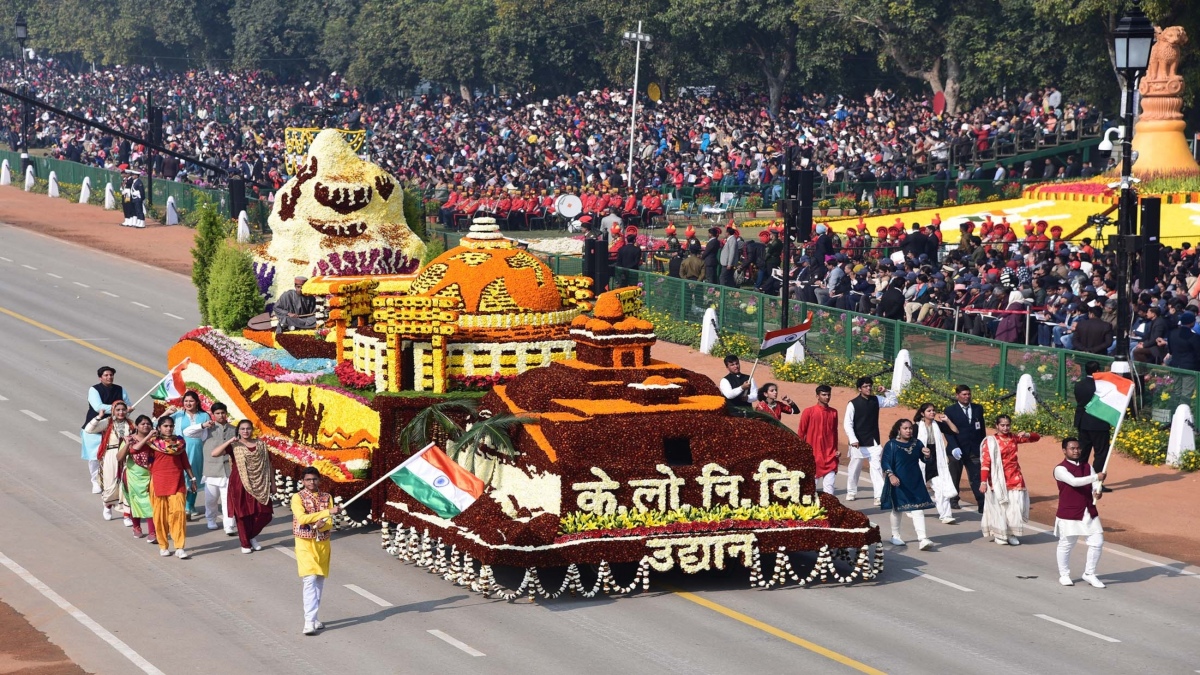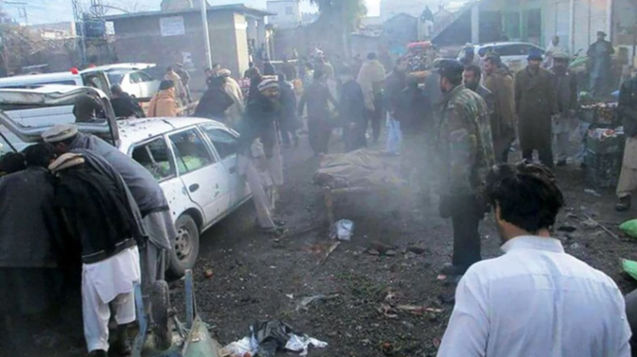Indian National Congress proclaimed on 26th.January 1929 the Declaration of Indian Independence-“PURNA SWARAJ”as opposed to the DOMINION status offered by the British Regime.
The Indian self-rule movement was a mass-based movement that encompassed various sections of society. It also underwent a process of constant ideological evolution. Although the underlying ideology of the campaign was anti-colonial, it was supported by a vision of independent economic development coupled with a secular, democratic, republican, and civil-libertarian political structure. After the 1930s, the movement took on a strong socialist orientation. The work of these various movements ultimately led to the Indian Independence Act 1947, which ended the suzerainty in India, and the creation of Pakistan. India remained a Dominion of the Crown until 26 January 1950, when the Constitution of India came into force, establishing the Republic of India; Pakistan was a dominion until 1956 when it adopted its first republican constitution. In 1971, East Pakistan declared independence as the People’s Republic of Bangladesh.
India achieved independence from British Raj on 15 August 1947 following the Indian independence movement. Pt.Jawhar Lal Nehru became the first Prime Minister of Independent India. His phenomenal speech on the eve of Independence-Tryst with Destiny still resonates in the hearts and minds of all Indians. On 29 August 1947, a Drafting Committee, was appointed to draft a permanent constitution for the independent India,with Dr B R Ambedkar as chairman.
Republic Day is a national Pride day for India. It is the date on which the Constitution of India came into effect on 26 January 1950 replacing the British colonial Government of India Act (1935) as the governing document of India and thus, turning the nation into a newly formed Independent republic.
The Constitution was adopted by the Indian Constituent Assembly on 26 November 1949 and came into effect on 26 January 1950 with a democratic government system, completing the country’s transition towards becoming an independent republic. 26 January was chosen as the date for Republic day because it was on this day in 1929 when the Declaration of Indian Independence (Purna Swaraj) was proclaimed by the Indian National Congress as opposed to the Dominion status offered by the British Regime.
Freedom from British Raj on 15 August 1947 was achieved following the Indian independence movement. The independence came through the Indian Independence Act 1947 an Act of the Parliament of the United Kingdom that partitioned British India into the two new independent Dominions of the British Commonwealth .India obtained its independence on 15 August 1947 as a constitutional monarchy with George VI as head of state and the Earl Mountbatten as governor-general. The country, though, did not yet have a permanent constitution; instead its laws were based on the modified colonial Government of India Act 1935. On 29 August 1947, a resolution was moved for the appointment of Drafting Committee, which was appointed to draft a permanent constitution, with Dr B R Ambedkar as chairman.
While India’s Independence Day celebrates its freedom from British Rule, the Republic Day celebrates the coming into force of its constitution. A draft constitution was prepared by the committee and submitted to the Constituent Assembly on 4 November 1947. The Assembly met, in sessions open to public, for 166 days, spread over a period of two years, 11 months and 18 days before adopting the Constitution. After many deliberations and some modifications, the 308 members of the Assembly signed two hand-written copies of the document (one each in Hindi and English) on 24 January 1950. Two days later which was on 26 January 1950, it came into effect throughout the whole nation. On that day, Dr. Rajendra Prasad’s began his first term of office as President of the Indian Union. The Constituent Assembly became the Parliament of India under the transitional provisions of the new Constitution.
Indian President Dr Rajendra Prasad -in the horse-drawn carriage took part in the first Republic Day parade on Rajpath, New Delhi, in 1950.
The main Republic Day celebration is held in the national capital, New Delhi, at the Rajpath before the President of India. On this day, ceremonious parades take place at the Rajpath, which are performed as a tribute to India; its unity in diversity,rich cultural heritage and constitutional democracy.
The Republic Day parade and celebrations are held in the capital, New Delhi. These are organised by the Ministry of Defence. Commencing from the gates of the Rashtrapati Bhavan (the President’s residence), Raisina Hill on Rajpath past the India Gate, this event is the main attraction of India’s Republic Day Celebrations and lasts for more than three days. The parade showcases India’s Defence Capability, diverse Cultural and Social Heritage.
Almost Nine to twelve different regiments of the Indian Army in addition to the Navy, and Air Force with their bands march past in all their finery and official decorations. The President of India who is the Commander-in-Chief of the Indian Armed Forces, takes the salute. Several contingents of various para-military forces of India and police forces also take part in this parade.
The Beating Retreat ceremony is also held after officially denoting the end of Republic Day festivities. It is conducted on the evening of 29 January, the third day after the Republic Day. It is performed by the bands of the three wings of the military, the Indian Army, Indian Navy and Indian Air Force. The venue is Raisina Hill and an adjacent square, Vijay Chowk, flanked by the North and South block of the Rashtrapati Bhavan(President’s Palace) towards the end of Rajpath.
The Chief Guest of the function is the President of India who arrives escorted by the President’s body guards , a cavalry unit. When the President arrives, the PBG commander commands for the National Salute, which is followed by the playing of the Indian National Anthem, Jana Gana Mana, by the Army. The Army develops the ceremony of display by the massed bands in which Military Bands, Pipe and Drum Bands, Buglers and Trumpeters from various Army Regiments besides bands from the Navy and Air Force take part which play popular tunes like Abide With Me, Mahatma Gandhi’s favourite hymn, and Saare Jahan Se Achcha.Hindustan Hamara.
On the eve of Republic Day, the President of India distributes Padma Awards to the civilians of India every year. These are the second highest civilian awards in India after Bharat Ratna. These awards are given in three categories, viz. Padma Vibhushan, Padma Bhushan and Padma Shri, in decreasing order of importance.
Padma Vibhushan for “exceptional and distinguished service”. Padma Vibhushan is the second-highest civilian award in India.
Padma Bhushan for “distinguished service of a high order”. Padma Bhushan is the third-highest civilian award in India .
Padma Shri for “distinguished service”. Padma Shri is the fourth-highest civilian award in India.
While being national honours, the Padma awards do not include cash allowances, benefits, or special concessions in rail/air travel. As Per a December 1995 judgment of the Supreme Court of India, no titles or honorifics are associated with the Bharat Ratna or any of the Padma awards; Honorees cannot use them or their initials as suffixes, prefixes or pre- and post-nominals attached to the awardee’s name. This includes any such use on letterheads, invitation cards, posters, books etc. In the case of any misuse, the awardee will forfeit the award, and he or she will be cautioned against any such misuse upon receiving the honour.
The decoration comprises a sanad (Certificate) issued under the hand and seal of the President and a Medallion. The recipients are also given a replica of the medallion, which they can wear during any ceremonial/State functions etc., if they desire. A commemorative brochure giving out brief details in respect of each award winner is also released on the day of the investiture ceremony.
The conscientious message of the freedom fighters and the forefathers of the constitution is in the PREAMBLE
The preamble is based on the ‘Objectives Resolution which was drafted and moved in the Constituent Assembly by Jawaharlal Nehru on 13 December 1946.[2] B. R. Ambedkar said about the preamble:
It was, indeed, a way of life, which recognizes liberty, equality, and fraternity as the principles of life and which cannot be divorced from each other: Liberty cannot be divorced from equality; equality cannot be divorced from liberty. Nor can liberty and equality be divorced from fraternity. Without equality, liberty would produce the supremacy of the few over the many. Equality without liberty would kill individual initiative. Without fraternity, liberty and equality could not become a natural course of things.
The Supreme Court of India originally stated in the Berubari case presidential reference that the preamble is not an integral part of the Indian constitution, and therefore it is not enforceable in a court of law. However, the same apex court, in the 1973 Kesavananda case, over-ruled earlier decisions and recognised that the preamble may be used to interpret ambiguous areas of the constitution where differing interpretations present themselves. In the 1995 case of Union Government Vs LIC of India, the Supreme Court once again held that the Preamble is an integral part of the Constitution.
Indian Nation State has evolved only one religion,that is “CONSTITUTIONALISM”
It means that the relationship between the government and religious groups are determined according to constitution and law. It separates the power of the state and religion. There is no difference of religion i.e.Hinduism, Buddhism, Jainism, Sikhism, Christianity and Islam are equally respected and moreover, there is no state religion. All the citizens of India are allowed to profess, practice and propagate. Explaining the meaning of secularism as adopted by India, Alexander Owics has written, “Secularism is a part of the basic structure of the Indian Constitution and it means equal freedom and respect for all religions.”
Ashok Bhan, Senior Advocate, Supreme Court of India







